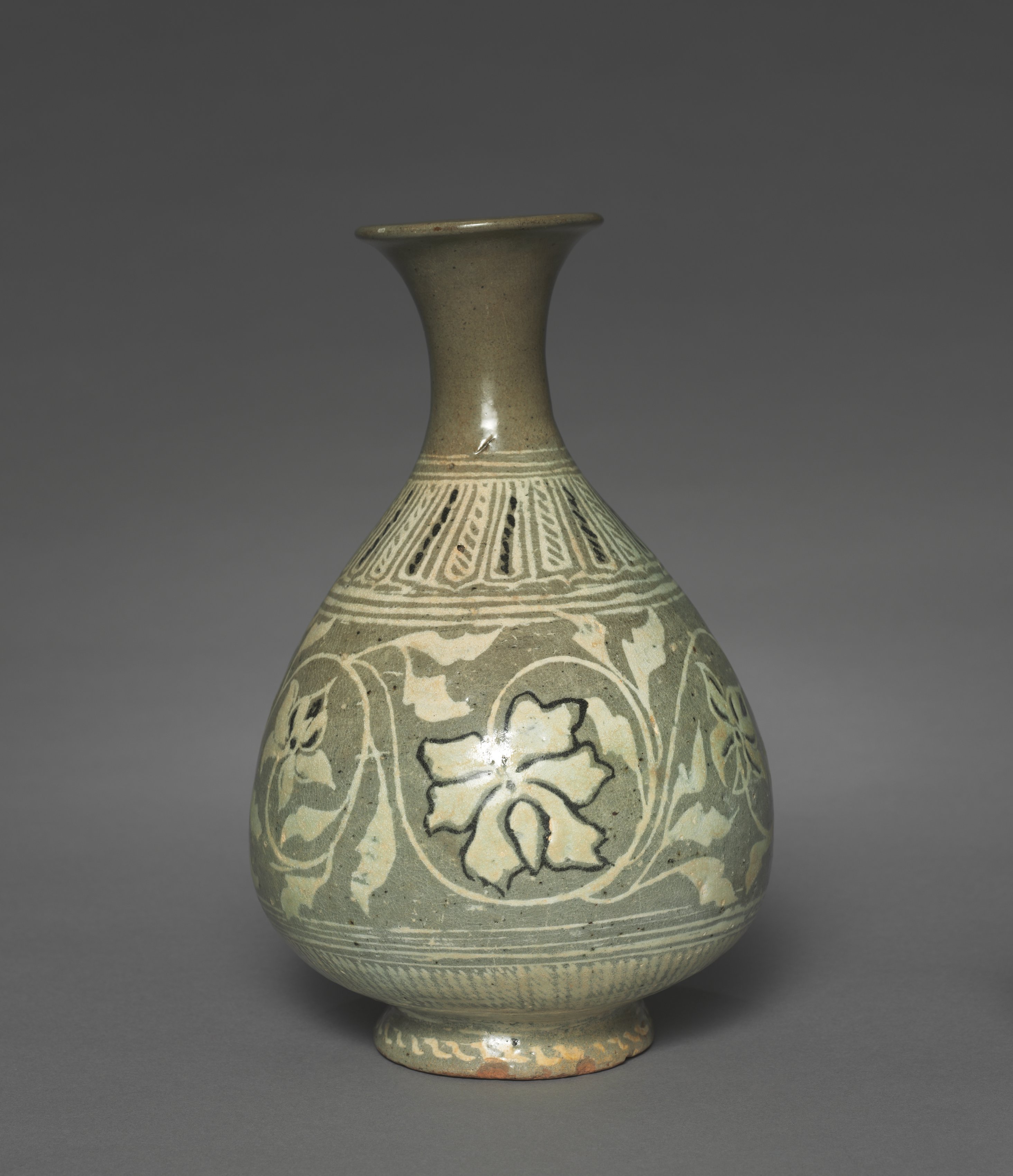The Cleveland Museum of Art
Collection Online as of April 26, 2024

Bottle Inlaid with Peony and Scroll Design
1400s
(1392–1910)
Outer diameter: 17 cm (6 11/16 in.); Overall: 27 cm (10 5/8 in.)
Location: not on view
Did You Know?
The term buncheong, which refers to this type of pottery, means "powdered gray-green glazed ceramics.”Description
Produced in both central and provincial kilns during during the 1400s–1500s, Buncheong (literally means "powdered green"), like this wine bottle commonly feature gray-green glaze due to the usage of less processed and refined clay high in iron. Many experimental techniques: white slip, inlay, stamping, and incising, which had been explored and perfected by Goryeo-period artists, were also adopted for bucheong pottery, yet resulting bold and whimsical visual impacts, completely different from elegant and refined Goryeo celadons.- Lee, So-young, and Seung-chang Jeon. Korean Buncheong Ceramics from the Leeum Samsung Museum of Art. New York: Metropolitan Museum of Art, 2011.Treasures from Korea: Arts and Culture of the Joseon Dynasty, 1392-1910. Philadelphia: Philadelphia Museum of Art, 2014.Park, Kyung-ja and Park Hyeong-soon. “Evolution of the Buncheong Wares in the Early Joseon Period as the White Porcelain Takes over the Taxation Supply [조선 전기 공납용 백자제작에 따른 분청사기 양식변화].” Misul sahak (2010): 291-321. www.dbpia.co.krBuncheong Ware [분청사기]. Seoul: Ehwa Woman’s Universtiry Museum, 2019.
- {{cite web|title=Bottle Inlaid with Peony and Scroll Design|url=false|author=|year=1400s|access-date=26 April 2024|publisher=Cleveland Museum of Art}}
Source URL:
https://www.clevelandart.org/art/1990.14